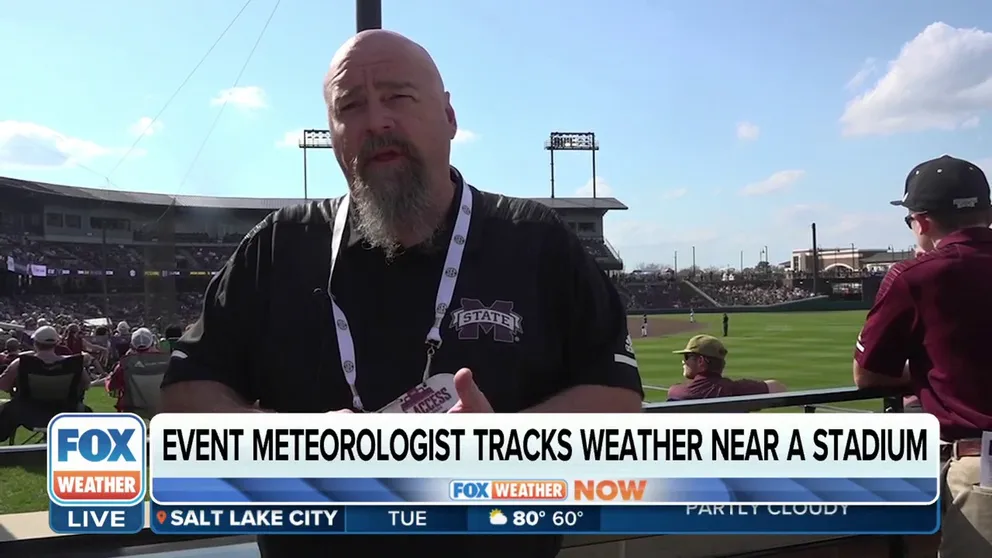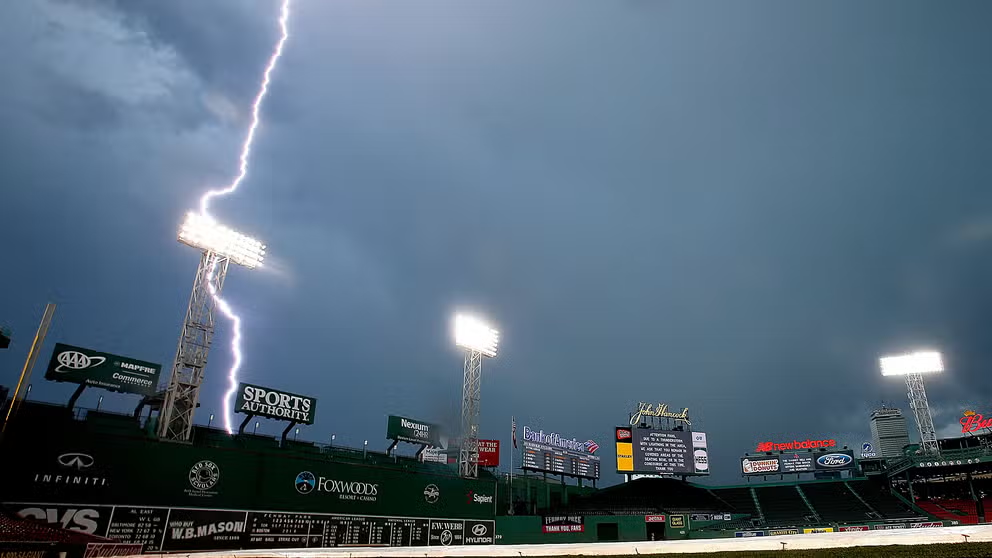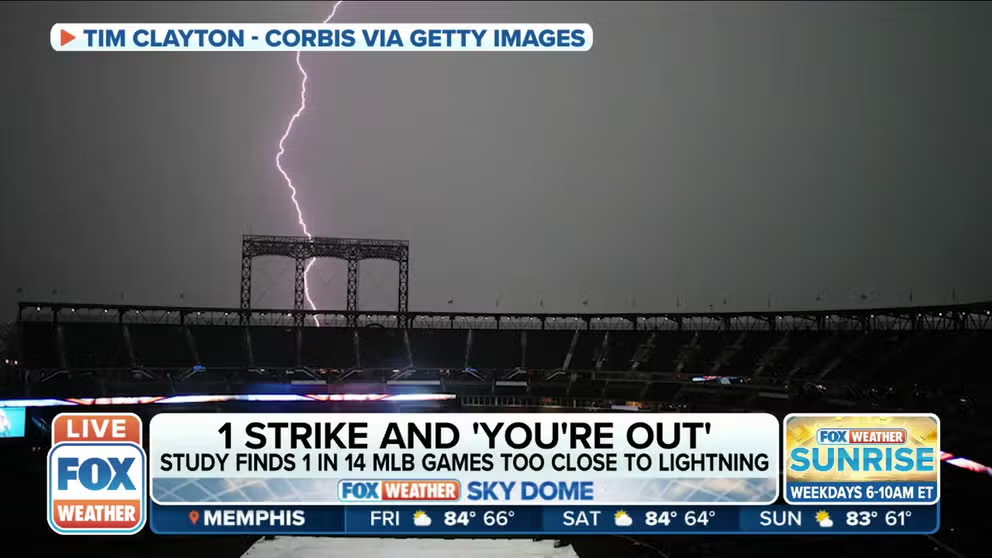How the NCAA protects against lightning dangers at baseball games
Umpires aren’t the only officials calling the strikes at an NCAA college baseball game. That responsibility also rests on an event meteorologist, whose job is to keep players and spectators safe by tracking the weather around the stadium, watching out for anything that might be disruptive to play – especially lightning.
MSU event meteorologist keeping fans, athletes safe from severe weather
Mississippi State University event meteorologist Mike Brown explains the process of monitoring severe storms in and around the stadium so fans and baseball players can avoid being caught in stormy weather.
STARKVILLE, Miss. -- As the summer baseball and thunderstorm seasons collide, there is a lot more than just the net behind home plate that is helping to keep fans and players safe.
Umpires aren’t the only officials calling the strikes at an NCAA college baseball game. That responsibility also rests on an event meteorologist, whose job is to keep players and spectators safe by tracking the weather around the stadium, watching out for anything that might be disruptive to play – especially lightning.
At Mississippi State University, Dr. Mike Brown serves as the event meteorologist and is tasked with making all weather calls related to sporting events on campus.
"We’ve got a lightning detection system we use to tell us the distance lightning is away," Dr. Brown told FOX Weather. "I have a room underneath the stadium where I can monitor all of that stuff, and am right next to the gameday operations people, so communication is really quick and easy. And we are only steps away from home plate to notify the home plate umpire should conditions change."
But there is so much more to it than just looking up at the sky for lightning strikes.
LIGHTNING SAFETY: WHEN THUNDER ROARS, EVEN TAKING OUT THE TRASH CAN TURN DEADLY
"It’s monitoring; it’s having protocols and physical things in place like lightning rods on top of the stadium itself, and well-grounded light stanchions – so any lightning strike to the facility would be directed with the electricity to the ground," he said.
No place is safe outside from lightning
There is really no place in a stadium or anywhere outside that is safe for fans or players when it comes to lightning or severe weather. Susceptible places include tailgate tents and golf carts, which may shelter you from rain, but they won’t prevent you from being struck by lightning.
"In a lot of the outfield that we have here in (MSU's) Dudy Noble (Field), you are very much exposed to lightning hazards," Brown said. "A lot of the stands themselves you are going to be quite exposed -- and certainly, walking to and from the park you are going to be exposed.
Top 7 MLB Ballparks for Lightning Frequency
Research shows about 1 out of every 14 MLB games features thunderstorms within 8 miles of the stadium. Here are the top open-air stadiums for lightning frequency.
And it's not just at the collegiate level. A 2022 study by Vaisala found that lightning strikes occurred dangerously close to 27 of Major League Baseball's 30 stadiums from 2016 through 2019 MLB seasons. Those in Houston, Miami, Tampa and St. Louis lead the way with the most games that experienced lightning.
With 75% of lightning deaths taking place from March through September -- which is also peak baseball season – the NCAA uses a strict lightning protocol for when to tell fans, officials, and athletes "you're outta here!"
1 STRIKE, 'YOU'RE OUT': STUDY FINDS DANGEROUS LIGHTNING CLOSE BY IN 1 OF EVERY 14 MLB GAMES
Study finds lightning is dangerously close by in 1 of every 14 MLB games
A new study by lightning expert Chris Vagasky with Vaisala finds that nearly one out of every 14 Major League Baseball games features lightning strikes that safety experts would consider occurring at an unsafe distance.
"Baseball seems like a game of momentum, and when you disrupt that momentum… coaches tend not to like that," Brown said. "But they do understand that we are doing it for the betterment of the spectators and their players."
Lightning safety expert Chris Vagasky told FOX Weather in 2022 that in a stadium, it's best to get out of the bleachers and get onto the concourse level.
"Get under a covered area – don't be right up against the edge of the overhang because lighting can jump from the overhang into you," he said. "Get closer to where the concession stands are. If it's real bad, get into one of the bathrooms – it's fully enclosed and will be giving you a lot of protection."
When it comes to vacating the best seats in the house, not all fans are willing to follow protocol. Despite the dangers, spectators can choose to sit out a weather delay in their seats.
WHAT HAPPENS WHEN SOMEONE IS STRUCK BY LIGHTNING
"We can’t force people to leave," Brown said. "But public address announcements are made, and we try to encourage people to seek shelter at least in the concourse areas under shelter or in their car nearby."
There are over 25 million lightning cloud to ground strikes that occur across the entire U.S. over the course of a year. In fact, there are several colleges in the south with stadiums that are more susceptible to lightning than any others like the University of Florida in Tallahassee and Louisiana State University in Baton Rouge -- all due in part to the proximity to the Gulf Coast.


